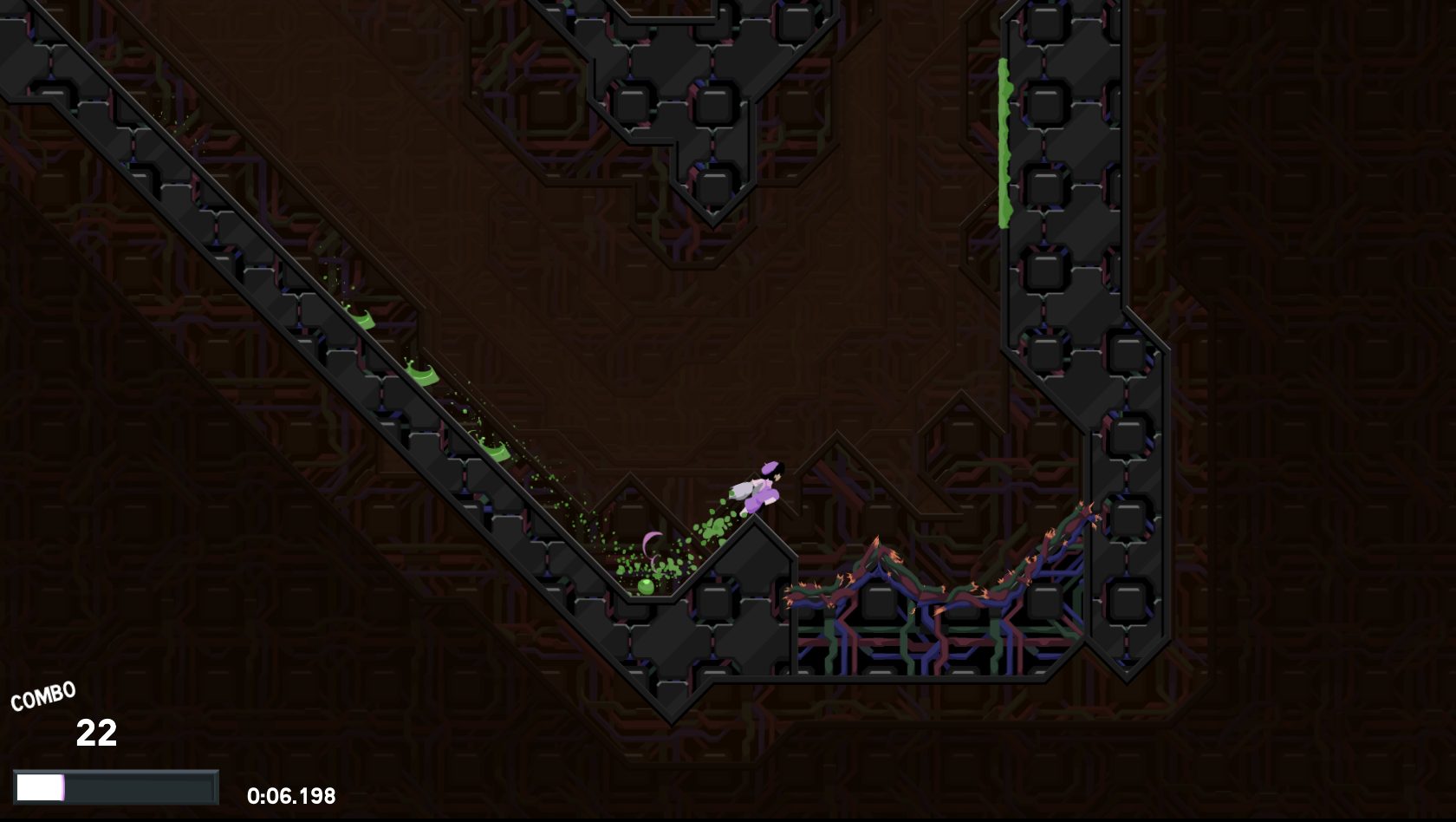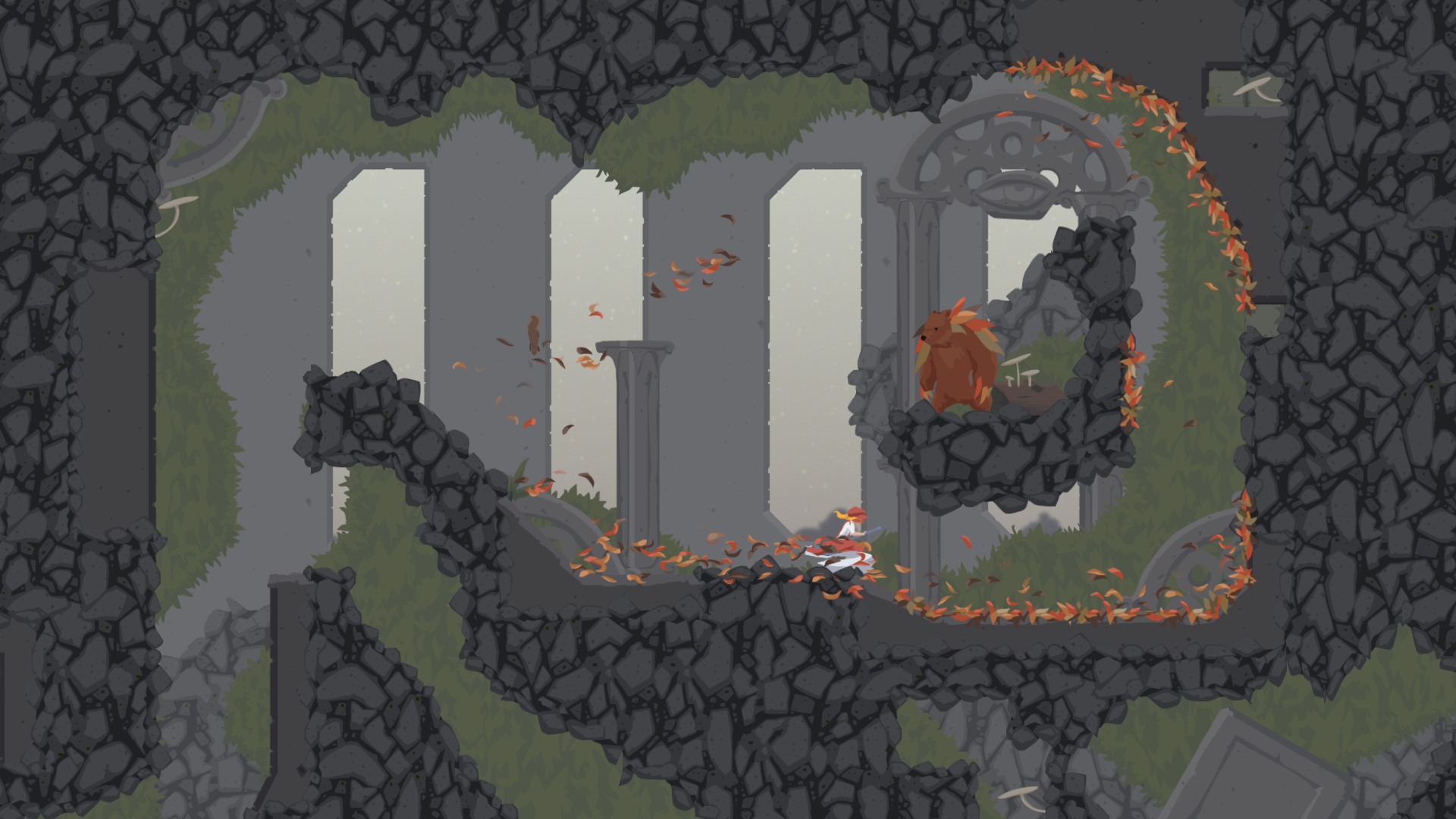
A couple of weeks ago I called Super Crate Box “assembly line gaming”. Dustforce makes a more explicit reference to manual labor. The point is to sweep up dirt as quickly and smoothly as possible. It’s like videogames are preparing us for the limited job opportunities of the future.
The videogame industry has celebrated the working man since its earliest days. Think Peter Pepper of Burgertime and the harried barkeep of Tapper. A jumpsuited plumber is still the biggest star this medium has ever known. Our elders might think they’re a serious waste of time, but videogames understand the value of a hard day’s work.
Dustforce lays claim to that lineage by presenting us with a roster of heroic janitors. These human dustbusters aim to clean up every speck of dirt in sight while preserving a perfect combo streak. The word “perfect” isn’t used lightly – you literally have to be completely perfect at a level to unlock another one. There are sixteen levels accessible at the beginning of the game, and to unlock more you have to win keys that are only earned by a perfect score. Otherwise you’ll stare long at locked doors and wonder what sort of videogame cruelty waits within.
Dustforce is almost as unforgiving as similarly minded 2D platformers Super Meat Boy and VVVVVV. You don’t have to fear death, but missing a button press by half a second or letting go of the joystick too early while sliding across the ceiling can ruin your perfect streak. So will taking a single hit from any enemy or losing your combo chain. You have to move ever forward without letting any of the game’s many obstacles disrupt your Zen-like flow.

You’re graded on two components for each level. Completion tracks how much dust you sweep away and finesse basically boils down to the length of your combo streak. As in real life, an F is a failing grade. As in videogames, an S inexplicably means perfection. Score an S rank on completion and finesse and you’ll get a key to unlock a new level. It will probably take you at least a dozen attempts to finish off any single level. Again: repetition, repetition, repetition.
Gradually you acclimate. Your mind reorients itself to think like Dustforce. You remember every inch of every level, every wall and enemy and scrap of dust, and you start to react without thought. You can pick out the best routes and the perfect spots for wallrunning and springboarding. Your streaks grow longer, you gather more and more dust and eventually you’ve scored that twin S and a shiny new key. Then you walk through another door and start over from scratch.
Dustforce doesn’t just reward obsession. It absolutely depends on it. If you aren’t interested in playing the same minute-long level twenty times in a row you probably shouldn’t buy the game. It’s not nearly as minimal and repetitive as Super Crate Box, but patience is still mandatory.
In a sly move the game’s art and music minimize that stress. Even at your most frustrated you’ll find solace in the soothing chillwave score, the colorful graphics with a hand-drawn aesthetic and the fluid animation that perfectly fits a game about heedlessly throwing your body around enclosed spaces. It’s all exceedingly pleasant, which nicely counterbalances the game’s hair-twisting hazards.
When you accept Dustforce on its own terms it almost becomes a kind of training guide. It turns you into a speedrunner. It might look like a cute retro-styled platformer, but it’s actually a cutthroat competition with no margin for error. Unlike Super Meat Boy, where you could progress simply by surviving and ignoring your time, Dustforce forces you to rush headlong into danger while still landing your spots. Realizing that won’t just make you better at this one game. It might make you rethink how you play others.
Dustforce was developed and published by Hitbox Team. It is available for the PC.
Garrett Martin is the videogame and comic book editor for Paste Magazine. He’s trying to become more patient. Twitter him, etc.